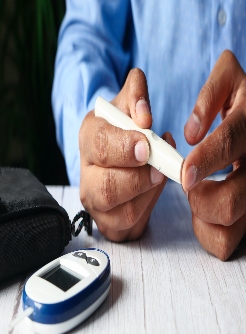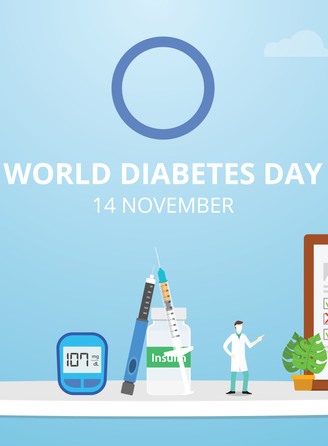Many Young People with Diabetes are Missing Glycemic Goals
By MD /alert staff
July 31, 2020
Trends in glycemic control are headed in the wrong direction for young diabetes patients compared to similar age cohorts in past years, according to a recent abstract.
A presentation at the 80th American Diabetes Association (ADA) Scientific Sessions reported on the results of the latest SEARCH for Diabetes in Youth research. It indicated that a substantial percentage of today’s youth with diabetes are not meeting recommended hemoglobin A1C goals. 
The University of Washington School of Medicine-led authors decried the trend, adding that it was occurring even with increased availability of diabetes technology, new therapies and more aggressive glycemic targets. In fact, they pointed out, many age groups have worse glycemic control compared to youth and young adults from 2002-2007.
“These results suggest that not all youth and young adults with diabetes are directly benefiting from the increased availability of diabetes technology, newer therapies, and the use of more aggressive glycemic targets for youth with diabetes over time,” said the study’s lead author Faisal Malik, MD, MSHS, assistant professor of pediatrics at the University of Washington School of Medicine, investigator at the Center for Child Heath, Behavior and Development at Seattle Children's Research Institute, and a pediatric endocrinologist at Seattle Children's Hospital. “Given the evidence highlighting the benefits of tight glycemic control, this study reinforces the need for interventions that combine the use of diabetes technology with effective behavioral and social approaches to improve A1C levels.”
The study, funded by the national Centers for Disease Control and Prevention and the National Institute of Diabetes and Digestive and Kidney Diseases, included 6,399 SEARCH for Diabetes in Youth participants who had been diagnosed with diabetes more than a year before. Researchers categorized visit data into three time periods: 2002-2007, 2008-2013, and 2014-2019, as well as three groups of diabetes duration: 1-4, 5-9, and 10+ years.
Participants contributed one randomly selected data point to each duration group. Among the factors analyzed in the model were hemoglobin A1c over time, adjusted for site, age, sex, race/ethnicity, health insurance status, and disease duration, both overall (with repeated measures) and for each duration group.
Results indicated that estimated mean A1c among individuals with type 1 diabetes was different over the three periods with a higher mean A1c in 2014-2019 and 2008-2013 vs. 2002-2007 (p<0.01; Table). A temporal difference was identified in mean A1c for T1D participants with diabetes for 5-9 years (p<0.01) and for T2D participants with diabetes 10+ years (p<0.01).
In addition to the overall trend of less glycemic control, authors note that “participants with T2D diagnosed in childhood and diabetes duration of 10+ years exhibit the temporal trend of worse glycemic control in recent years.”
The estimated average A1C for the most recent cohort of youth and young adults with type 1 diabetes was 8.7%, while the most recent group with type 2 diabetes had an estimated average A1c of 8.5%.
Overall, youth and young adults with diabetes who had study visits between 2014 and 2019 had average A1C levels that were comparable to earlier SEARCH cohorts, they said, but current youth and young adults with type 1 diabetes in the 10-14, 15-19, and 20-24 age groups continue to have worse glycemic control than the 2002-2007 cohort. At the same time, they said, participants 25 and older with type 2 diabetes exhibit a temporal trend of worse glycemic control relative to earlier time periods.
“The increasing trends in the burden and risk of both type 1 and type 2 diabetes suggest there is a need to continue and likely expand comprehensive and sustainable surveillance efforts in youth and young adults,” explained SEARCH principal investigator and study co-author Dana Dabelea, MD, PhD, director of the Lifecourse Epidemiology of Adiposity and Diabetes (LEAD) Center and the Conrad M. Riley Endowed Professor at the Colorado School of Public Health. “Given the evidence of early complications despite current therapeutic approaches, continuing the long-term follow up of youth with diabetes is necessary to expand our understanding of its natural history, so the most appropriate approaches to primary, secondary, and tertiary prevention of diabetes and its complications can be developed and implemented.”
The SEARCH for Diabetes in Youth (SEARCH) study is the largest, most diverse study of diabetes in youth in the United States. Currently, SEARCH has more than 27,000 participants across racial and ethnic backgrounds from 10 different states visiting one of five study centers in the country in California, Colorado, Ohio, South Carolina and Washington.














.jpg)






















